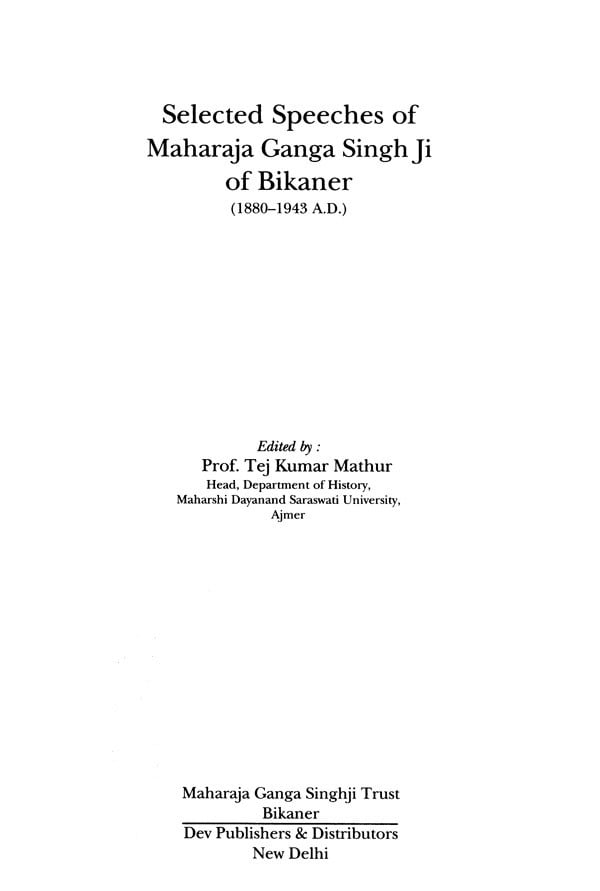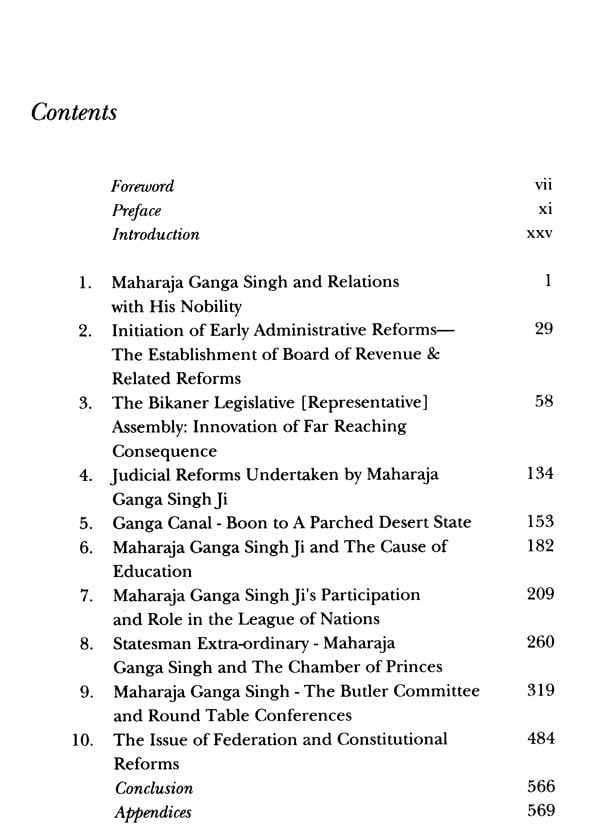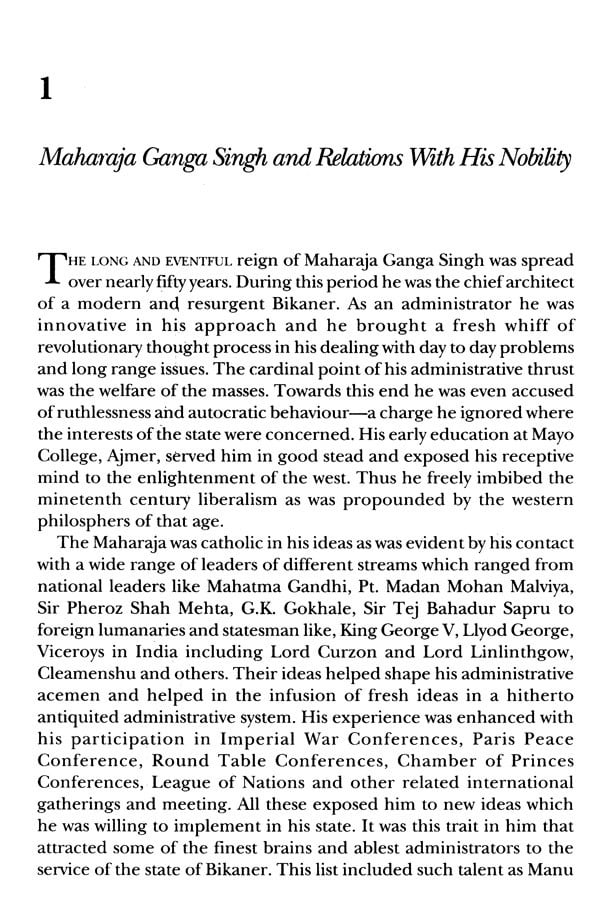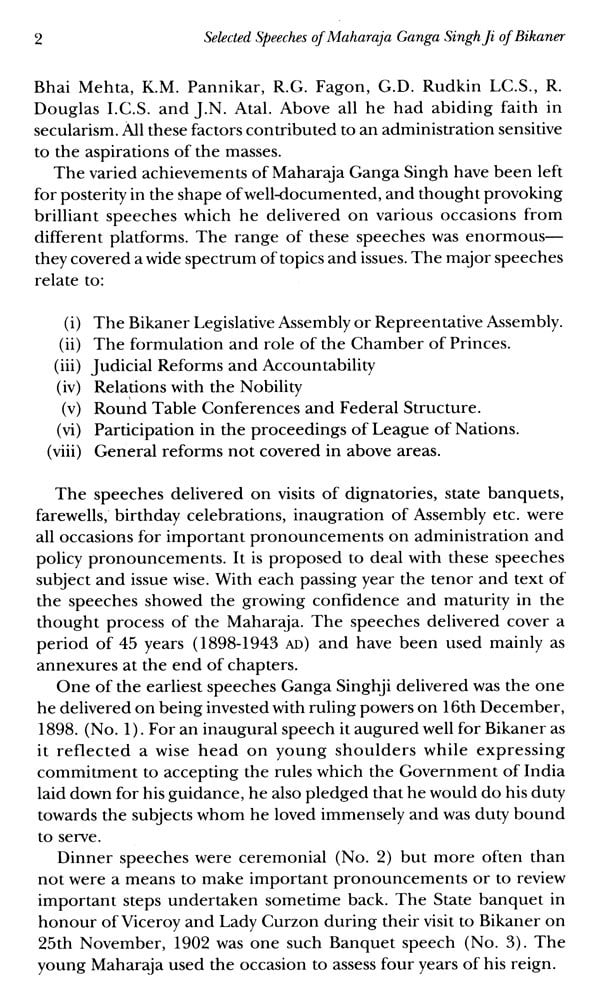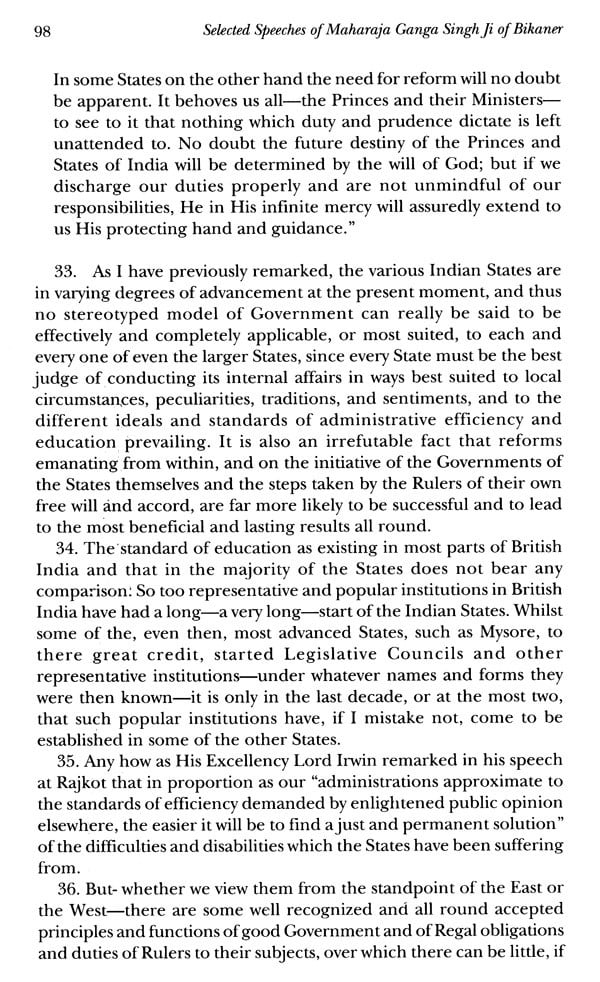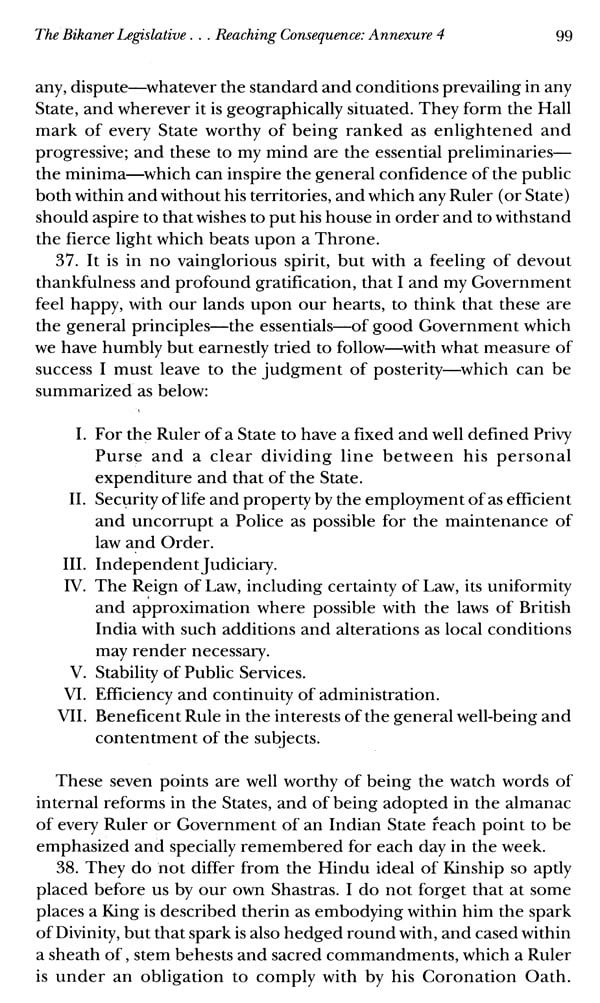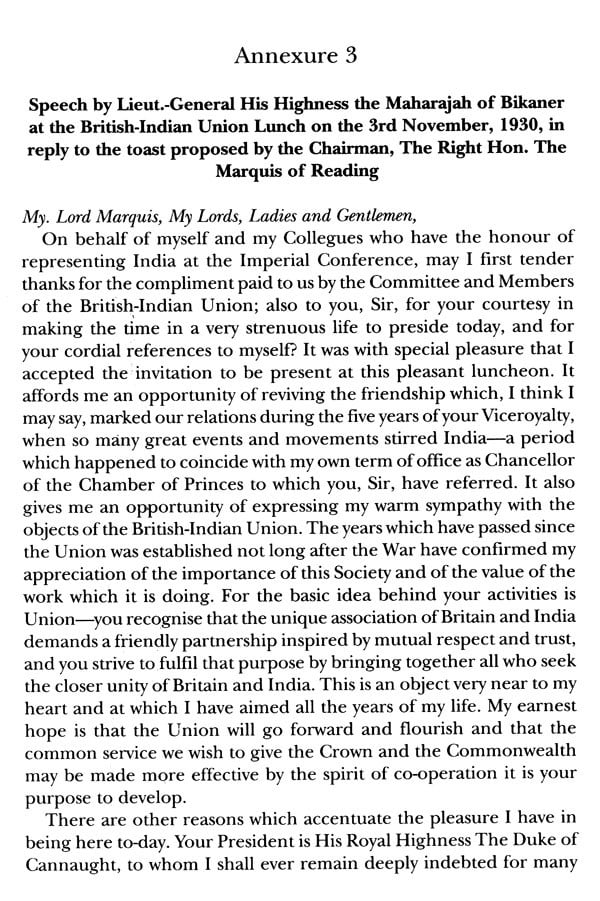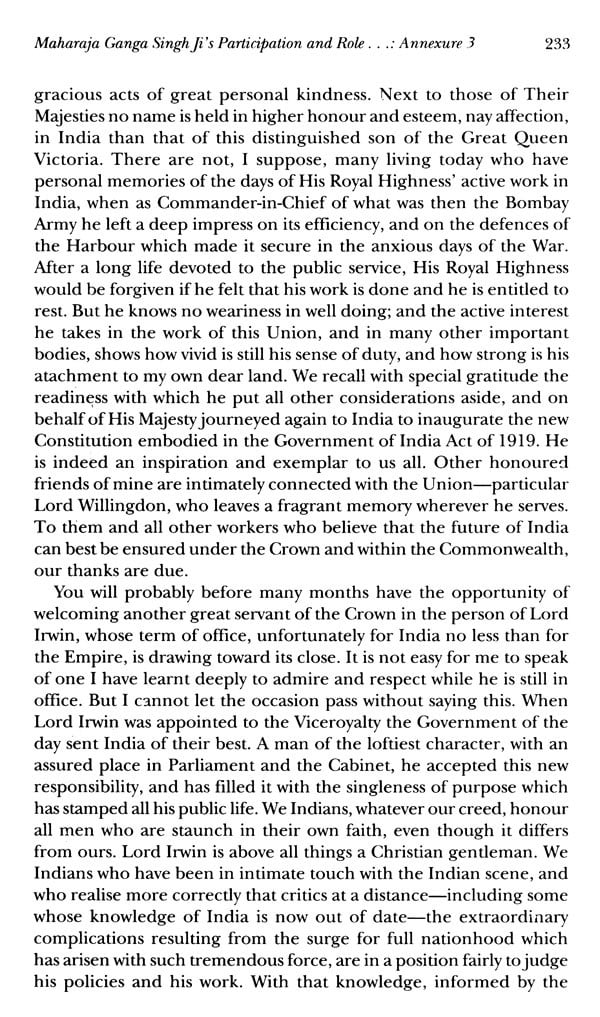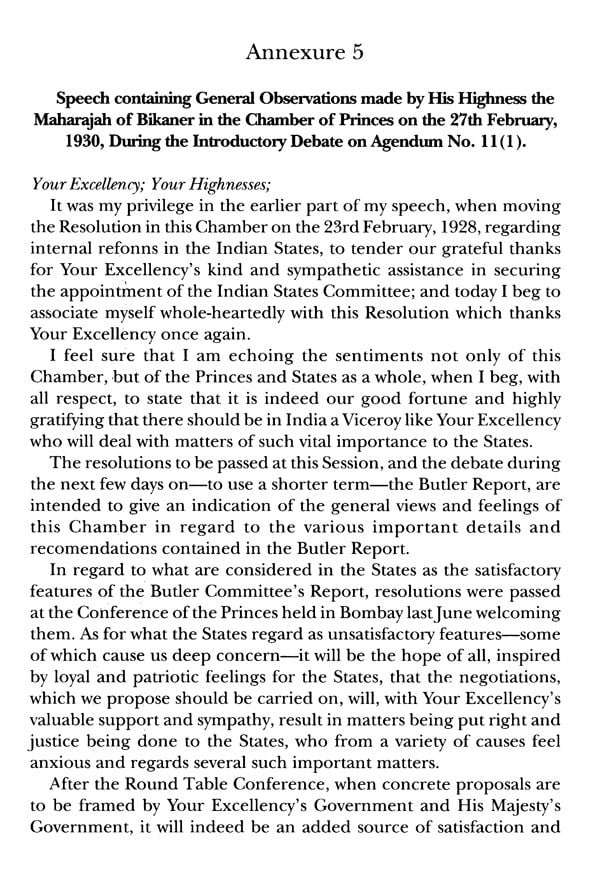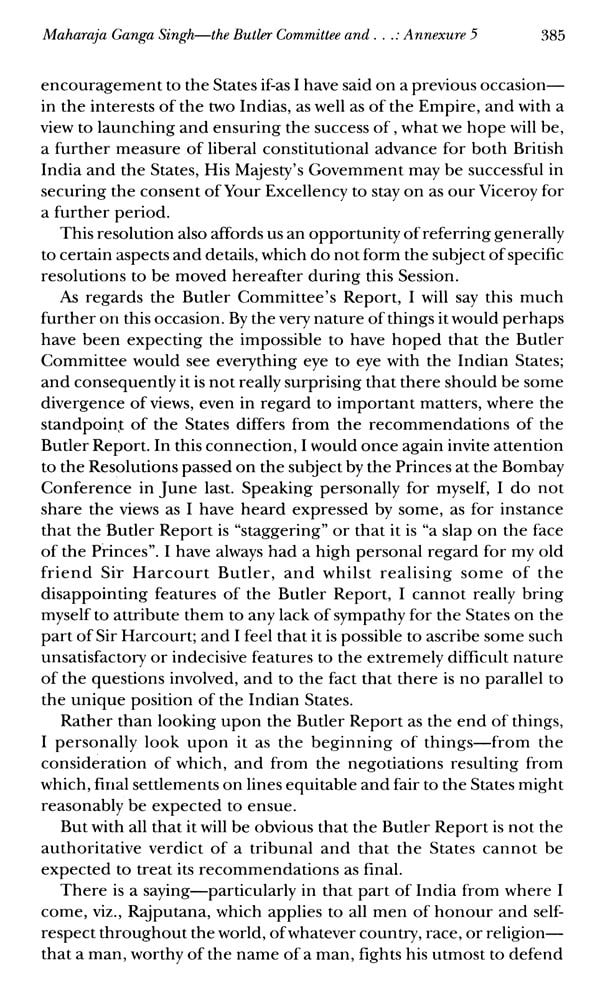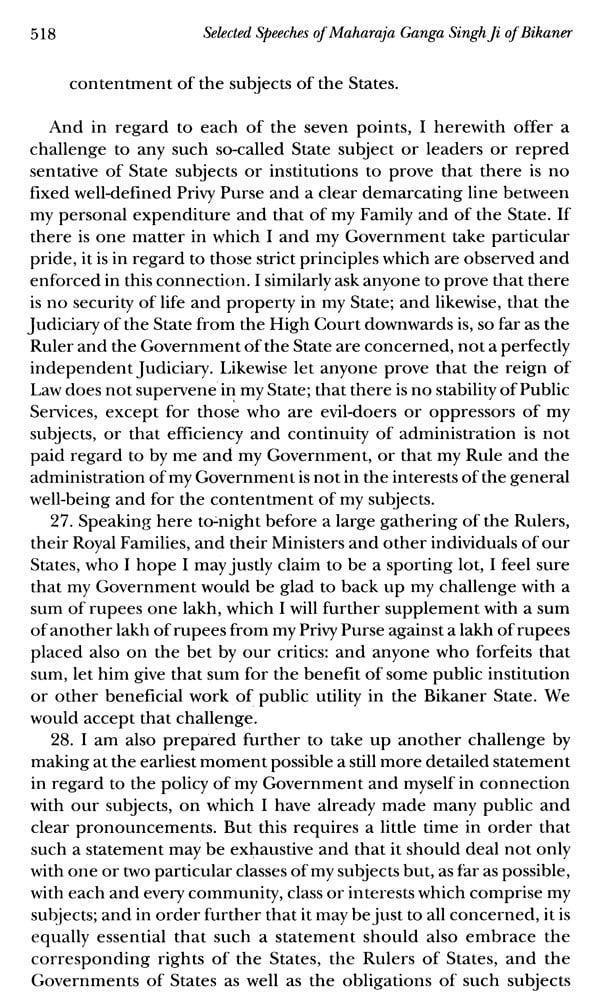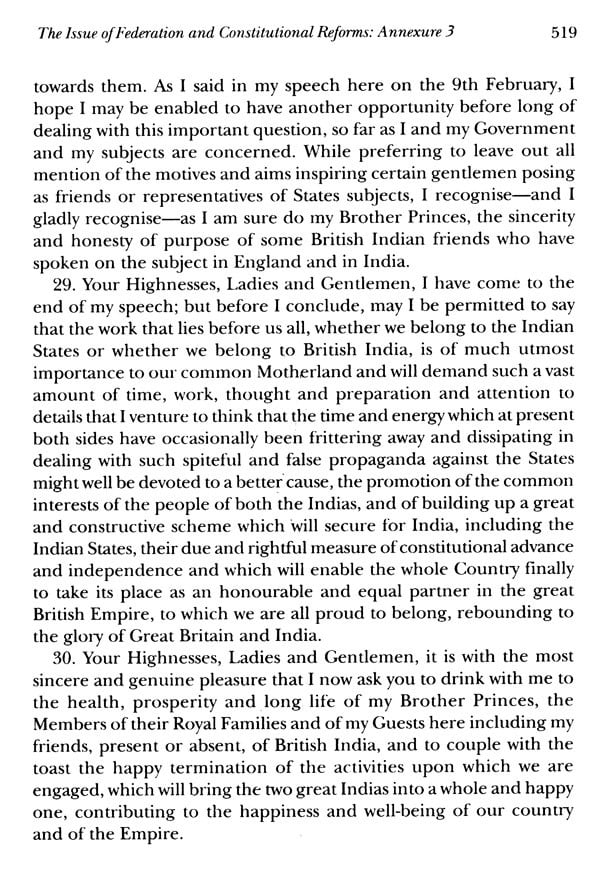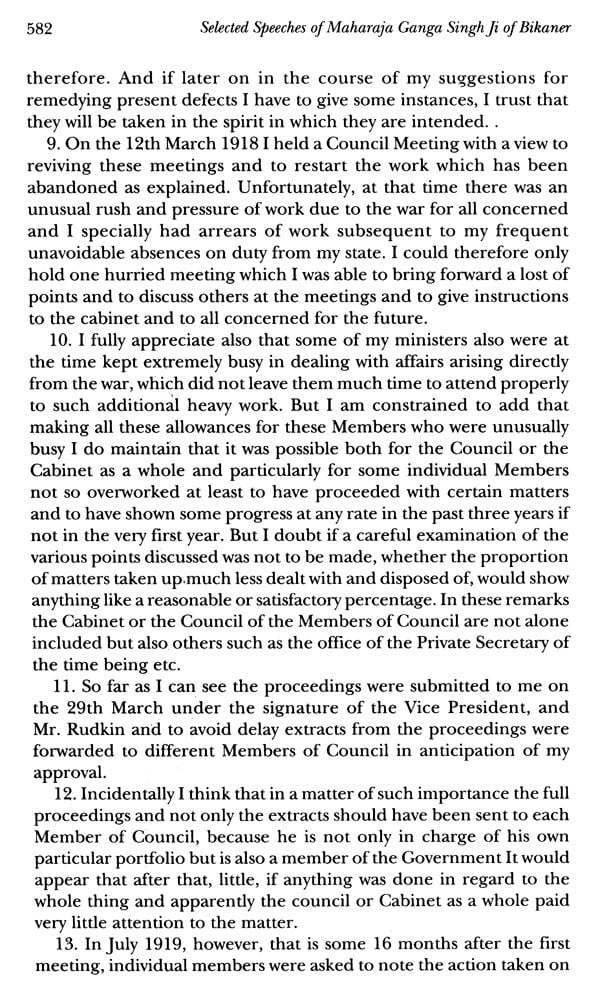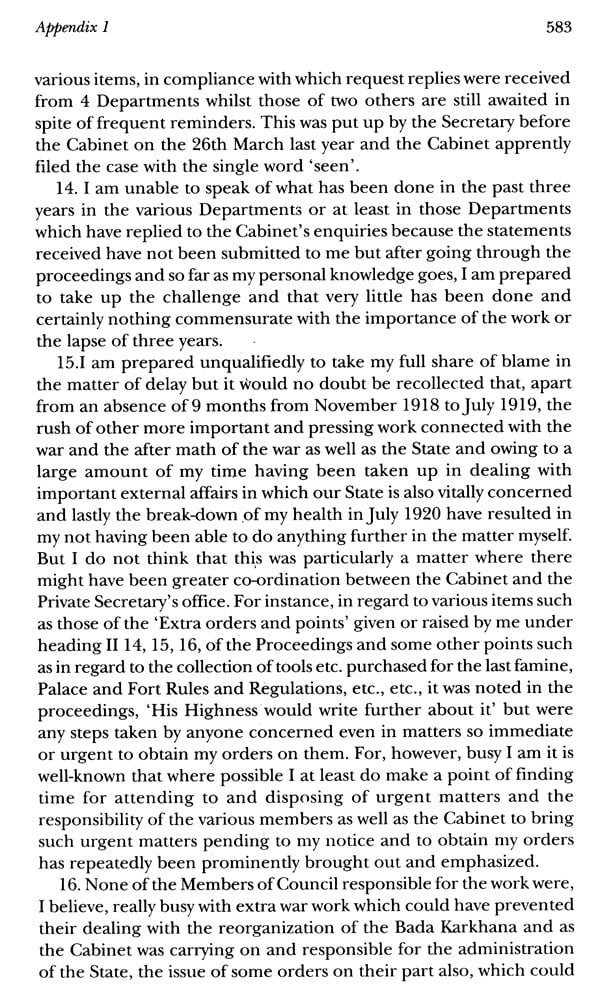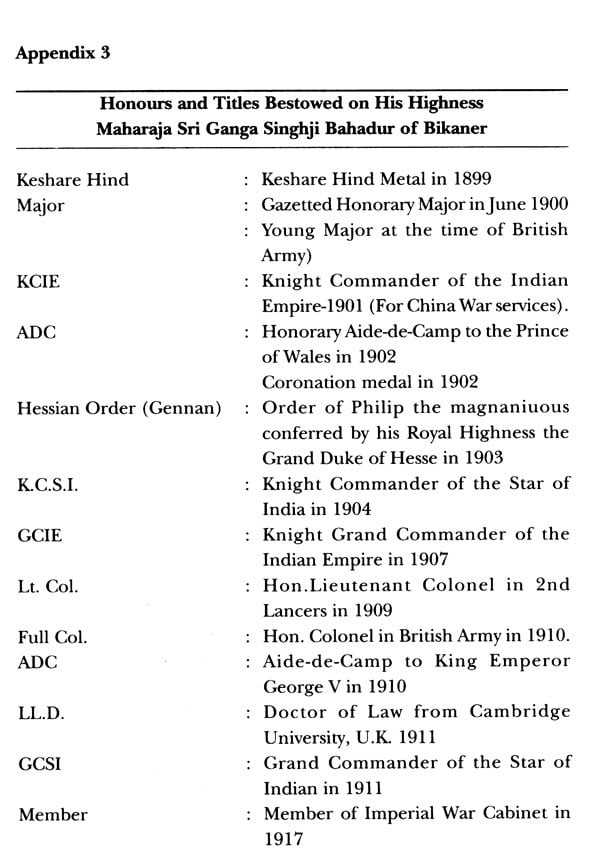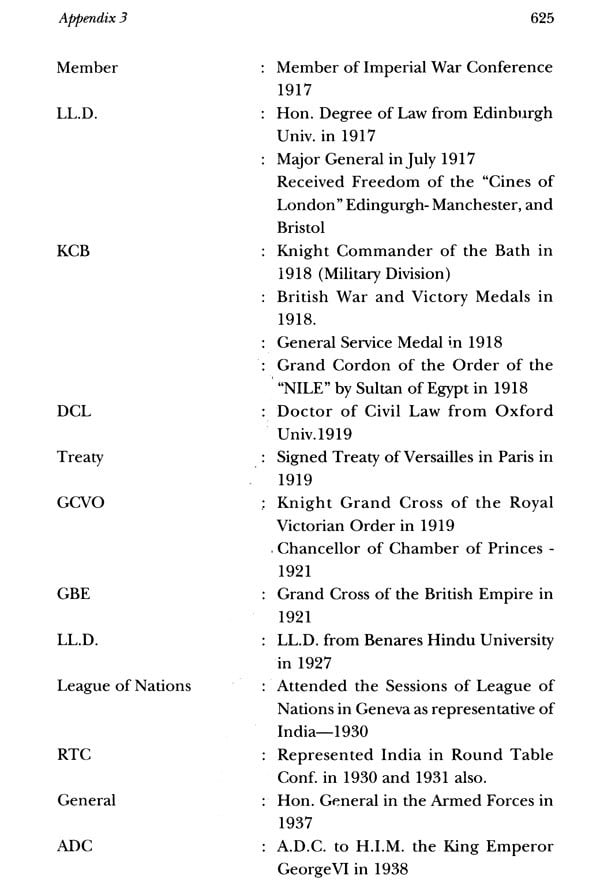
Selected Speeches of Maharaja Ganga Singhji of Bikaner (1880-1943 A.D.)
Book Specification
| Item Code: | UAQ105 |
| Author: | Tej Kumar Mathur |
| Publisher: | Maharaja Ganga Singhji Trust Bikaner |
| Language: | English |
| Edition: | 2014 |
| ISBN: | 9789381406267 |
| Pages: | 650 |
| Cover: | HARDCOVER |
| Other Details | 10.00 X 7.00 inch |
| Weight | 1.02 kg |
Book Description
Maharaja Ganga Singh succeeded to the gaddi of his ancestors as the 21" Maharaja of Bikaner on 31 August 1887 when he was only seven years old. The Maharaja assumed full powers of government on 16 December 1898. He ruled the state for a period of five decades- from 1887 till his demise in 1943. Under his rule the city of Bikaner had advanced beyond comprehension - from a small desert town into a thriving, modern, well-laid-out city.
Maharaja Ganga Singh was an intrepid and colourful personality, and had earned a high place in the gallery of great Indian rulers of the era. Apart from being a visionary administrator, he was also an eminent statesman and an eloquent orator who was held in the highest esteem all over the world.
The British Prime Minister, David Lloyd George in his memoirs, the war-time premier says:
Bikaner the Indian Prince was a magnificent specimen of manhood of his great country. We soon found that he was one of the wise men that came from the East. More and more did we come to rely on his advice, especially on all questions that affected India."
As described by Iris Butler in 'A Viceroy's Wife:" "Sir Ganga Singh.......occupied a great position in Indian politics and social life. A man of striking personal beauty, charm and great ambition......A very cosmopolitan, a very sophisticated man, but one who never forgot his Rajput past..... Maharaja Ganga Singh's note after signing the Paris Peace Treaty.
It was thus for the first time in Indian history that the signature of an Indian Prince representing the Princes of India appeared on a document that most fateful in the history of the world and which, it is earnestly hoped and prayed, will result in a stable and lasting peace."
One such star who shone very brightly on the firmament was Maharaja Ganga Singh Ji of Bikaner who dominated and played a very crucial role in shaping the destinies of India in the closing decade of the nineteenth century and the first half of the twentieth century. During this eventful era he also represented India with rare distinction on many an international fora and his role in these won him universal respect. On the domestic front at the same time he transformed a backward desert state of western Rajasthan into a progressive state which became a role model for other princely states in India.
This enlightened ruler was born on the auspicious day of Vijaydashmi (13th October) in 1880. He was the son of Maharaja Lal Singhji and ascended the throne of Bikaner as its 21st ruler at the tender age of 7 years when Maharaja Dunger Singh Ji passed away on the 9th August, 1887. For the next fifty six years till his death on 2nd February, 1943, he strode like a colossus on the Indian political stage and his impact was felt in many institutions with which he had been associated or had been created by him. Maharaja Ganga Singh Ji was cast in the ideal mould of a far-sighted Statesman whose political acumen and astuteness were widely respected and his advice was invariably sought on weighty national and international issues. His vision and broad-mindedness contrasted starkly with the narrow mindedness of the age.
During the course of 300 years of their patriotism the Rajas and Maharajas of Bikaner had demonstrated their worth in the history of India. Their patriotism, valour, sacrifice, secular outlook and benevolence were of a high order. In addition to this, they were great patrons of art, architecture, music, literature and culture. Looked at from every aspect the history of the Bikaner state is fabulously rich. A focal point of Bikaner is the village of Deshnoke. Here in this small, quiet and peaceful town twenty miles from the city of Bikaner, is situated a marble temple in the memory of a Charan lady, Karniji.
She is the deity of the Bikaner family and after whom my father was named. When Rao Bika came to carve out a kingdom for himself some five centuries ago, he stopped at the village of Deshnoke. It is said that Karniji provided the inspiration to Rao Bika in his quest for a kingdom.
Maharaja Ganga Singh succeeded to the gaddi of his ancestors after the demise of Maharaja Dungar Singh, who was Maharaja Ganga Singh's elder brother and had no son; in 1887 he adopted his younger brother as his heir, Maharaja Dungar Singh died on 19 August 1887 and on 21 August 1887 Maharaja Ganga Singh was proclaimed the 21" Maharaja of Bikaner. However, according to the customs of the state he was formally installed on 31 August 1887- after the twelve day ceremonies.
**Contents and Sample Pages**
